Uncertainty of Energy and Economic Performance of Manual Solar Shades in Hot Summer and Cold Winter Regions of China
Abstract
1. Introduction
1.1. Importance of Solar Shading Devices
1.2. Literature Review
1.3. Research Gaps
2. Methodology
2.1. Office Cell
2.2. The Stochastic Model of Manual Solar Shades
2.3. Uncertainty Index
2.3.1. Shade Control Behavior
2.3.2. Energy Performance
2.4. Number of Repeated Simulations
2.5. Economic Analysis
2.6. Comparison of Behavior Models with Deterministic Models
3. Results and Discussion
3.1. Uncertainty of Shade Control
3.2. Energy Uncertainty
3.3. Energy-Saving as Compared to Bare Windows
3.4. Economic Performance
3.5. Comparison with Deterministic Models
4. Conclusions
Supplementary Materials
Author Contributions
Funding
Conflicts of Interest
Nomenclature
| LCE | life cycle economic performance (RMB) |
| NPV | net present value (RMB) |
| I | life cycle cost (RMB) |
| P | price of energy (RMB/kWh) |
| x | energy data for distribution fitting (kWh) |
| CV | coefficient of variation |
| Et | total energy savings as compared to bare windows at t years (kWh) |
| i | annual energy inflation rate |
| d | market discount rate |
| N | the life span of a typical building (year) |
| Greek letters | |
| μ | mean value |
| σ | standard deviation |
| Subscripts | |
| t | the t-th year which ranges from 1 to N |
References
- Yao, J. Determining the energy performance of manually controlled solar shades: A stochastic model based co-simulation analysis. Appl. Energy 2014, 127, 64–80. [Google Scholar] [CrossRef]
- Yan, D.; Hong, T.Z.; Dong, B.; Mahdavi, A.; D’Oca, S.; Gaetanie, I.; Feng, X.H. IEA EBC Annex 66: Definition and simulation of occupant behavior in buildings. Eng. Build. 2017, 156, 258–270. [Google Scholar] [CrossRef]
- Azar, E.; Menassa, C.C. Agent-based modeling of occupants and their impact on energy use in commercial buildings. J. Comput. Civ. Eng. 2012, 26, 506–518. [Google Scholar] [CrossRef]
- Mahdavi, A.; Mohammadi, A.; Kabir, E.; Lambeva, L. Occupants’ operation of lighting and shading systems in office buildings. J. Build. Perform. Simul. 2008, 1, 57–65. [Google Scholar] [CrossRef]
- Gunay, H.B.; O’Brien, W.; Beausoleil-Morrison, I. A critical review of observation studies, modeling, and simulation of adaptive occupant behaviors in offices. Build. Environ. 2013, 70, 31–47. [Google Scholar] [CrossRef]
- O’Brien, W.; Kapsis, K.; Athienitis, A.K. Manually-operated window shade patterns in office buildings: A critical review. Build. Environ. 2013, 60, 319–338. [Google Scholar] [CrossRef]
- Van Den Wymelenberg, K.G. Patterns of occupant interaction with window blinds: A literature review. Eng. Build. 2012, 51, 165–176. [Google Scholar] [CrossRef]
- Roche, L.; Dewey, E.; Littlefair, P. Occupant reactions to daylight in offices. Light. Res. Technol. 2000, 32, 119–126. [Google Scholar] [CrossRef]
- Lee, E.S.; Selkowitz, S.E. The Design and Evaluation of Integrated Envelope and Lighting Control Strategies for Commercial Buildings. Available online: https://escholarship.org/uc/item/3xf9t5rf#author (accessed on 11 October 2019).
- Foster, M.; Oreszczyn, T. Occupant control of passive systems: the use of Venetian blinds. Build. Environ. 2001, 36, 149–155. [Google Scholar] [CrossRef]
- Reinhart, C.F. Lightswitch-2002: A model for manual and automated control of electric lighting and blinds. Sol. Eng. 2004, 77, 15–28. [Google Scholar] [CrossRef]
- Haldi, F.; Robinson, D. Adaptive actions on shading devices in response to local visual stimuli. J. Build. Perform. Simul. 2010, 3, 135–153. [Google Scholar] [CrossRef]
- Da Silva, P.C.; Leal, V.; Andersen, M. Occupants interaction with electric lighting and shading systems in real single-occupied offices: Results from a monitoring campaign. Build. Environ. 2013, 64, 152. [Google Scholar] [CrossRef]
- Da Silva, P.C.; Leal, V.; Andersen, M. Occupants’ behaviour in energy simulation tools: Lessons from a field monitoring campaign regarding lighting and shading control. J. Build. Perform. Simul. 2015, 8, 338–358. [Google Scholar] [CrossRef]
- O’Brien, W.; Gunay, H.B. Mitigating office performance uncertainty of occupant use of window blinds and lighting using robust design. Build. Simul. 2015, 8, 621–636. [Google Scholar] [CrossRef]
- Clevenger, C.M.; Haymaker, J. The impact of the building occupant on energy modeling simulations. Civ. Build. Eng. 2006. Available online: http://citeseerx.ist.psu.edu/viewdoc/download?doi=10.1.1.163.2489&rep=rep1&type=pdf (accessed on 11 October 2019).
- Yan, D.; Feng, X.H.; Jin, Y.; Wang, C. The evaluation of stochastic occupant behavior models from an application-oriented perspective: Using the lighting behavior model as a case study. Eng. Build. 2018, 176, 151–162. [Google Scholar] [CrossRef]
- Zhu, P.; Gilbride, M.; Yan, D.; Sun, H.S.; Meek, C. Lighting energy consumption in ultra-low energy buildings: Using a simulation and measurement methodology to model occupant behavior and lighting controls. Build. Simul. 2017, 10, 799–810. [Google Scholar] [CrossRef]
- Zhou, X.; Yan, D.; Feng, X.H.; Deng, G.W.; Jian, Y.W.; Jiang, Y. Influence of household air-conditioning use modes on the energy performance of residential district cooling systems. Build. Simul. 2016, 9, 429–441. [Google Scholar] [CrossRef]
- Gilani, S.; O’Brien, W.; Gunay, H.B. Simulating occupants’ impact on building energy performance at different spatial scales. Build. Environ. 2018, 132, 327–337. [Google Scholar] [CrossRef]
- Parys, W.; Saelens, D.; Hens, H. Coupling of dynamic building simulation with stochastic modelling of occupant behaviour in offices-a review-based integrated methodology. J. Build. Perform. Simul. 2011, 4, 339–358. [Google Scholar] [CrossRef]
- Chapman, J.; Siebers, P.; Robinson, D. On the multi-agent stochastic simulation of occupants in buildings. J. Build. Perform. Simul. 2018, 11, 604–621. [Google Scholar] [CrossRef]
- Yao, J. Modelling and simulating occupant behaviour on air conditioning in residential buildings. Eng. Build. 2018, 175, 1–10. [Google Scholar] [CrossRef]
- Macdonald, I.A. Comparison of sampling techniques on the performance of Monte Carlo based sensitivity analysis. In Proceedings of the Eleventh International IBPSA Conference, Glasgow, UK, 27–30 July 2009. [Google Scholar]
- Robinson, S. Simulation: The Practice of Model Development and Use; Palgrave Macmillan: London, UK, 2014. [Google Scholar]
- Yao, J. A multi-objective (energy, economic and environmental performance) life cycle analysis for better building design. Sustainability 2014, 2, 602–614. [Google Scholar] [CrossRef]
- CEN, EN ISO 13790. Energy Performance of Buildings-Calculation of Energy Use for Space Heating and Cooling. E.C.F. Standardization. 2008. Available online: http://www.cres.gr/greenbuilding/PDF/prend/set3/WI_14_TC-draft-ISO13790_2006-07-10.pdf (accessed on 11 October 2019).
- Prada, A.; Pernigotto, G.; Baggio, P.; Gasparella, A. Uncertainty propagation of material properties in energy simulation of existing residential buildings: The role of buildings features. Build. Simul. 2018, 11, 449–464. [Google Scholar] [CrossRef]
- Yao, J. A new design optimization method for energy and indoor thermal performance of apartment buildings. Eng. Eng. 2018, 115, 23–37. [Google Scholar] [CrossRef]
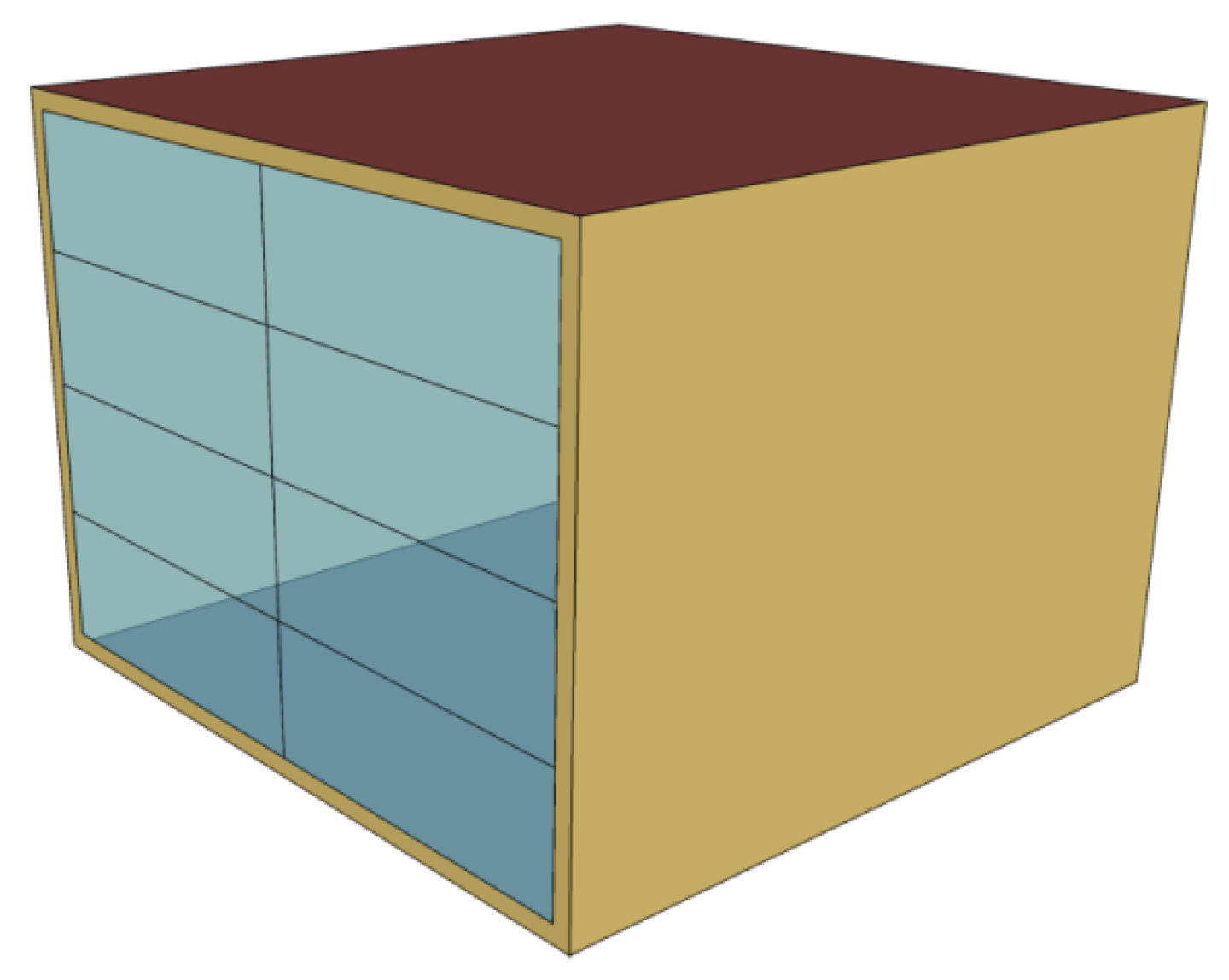



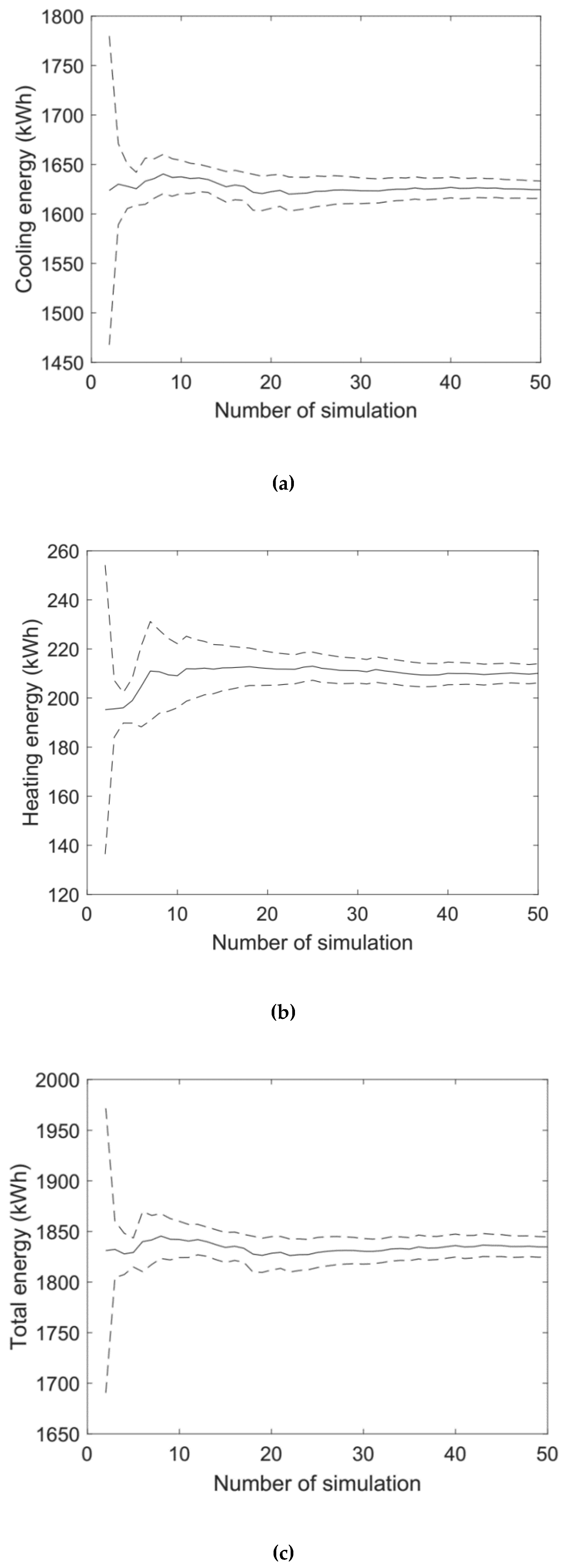

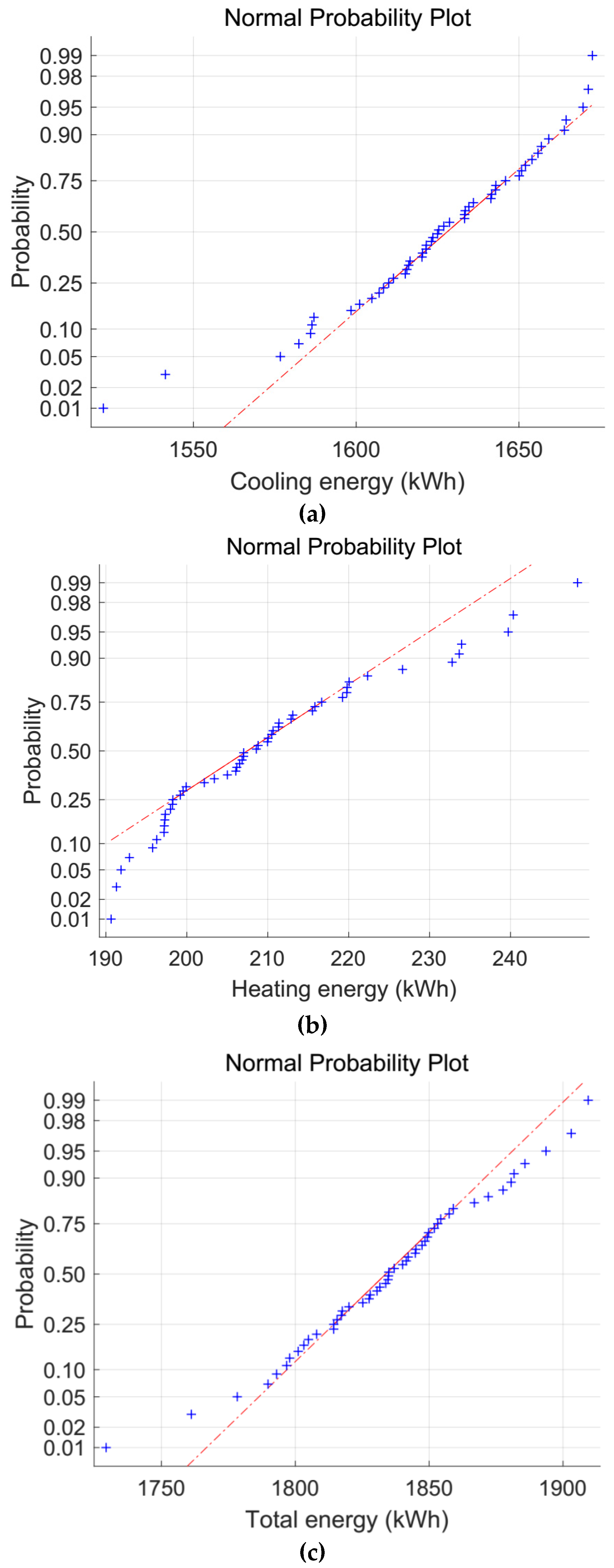
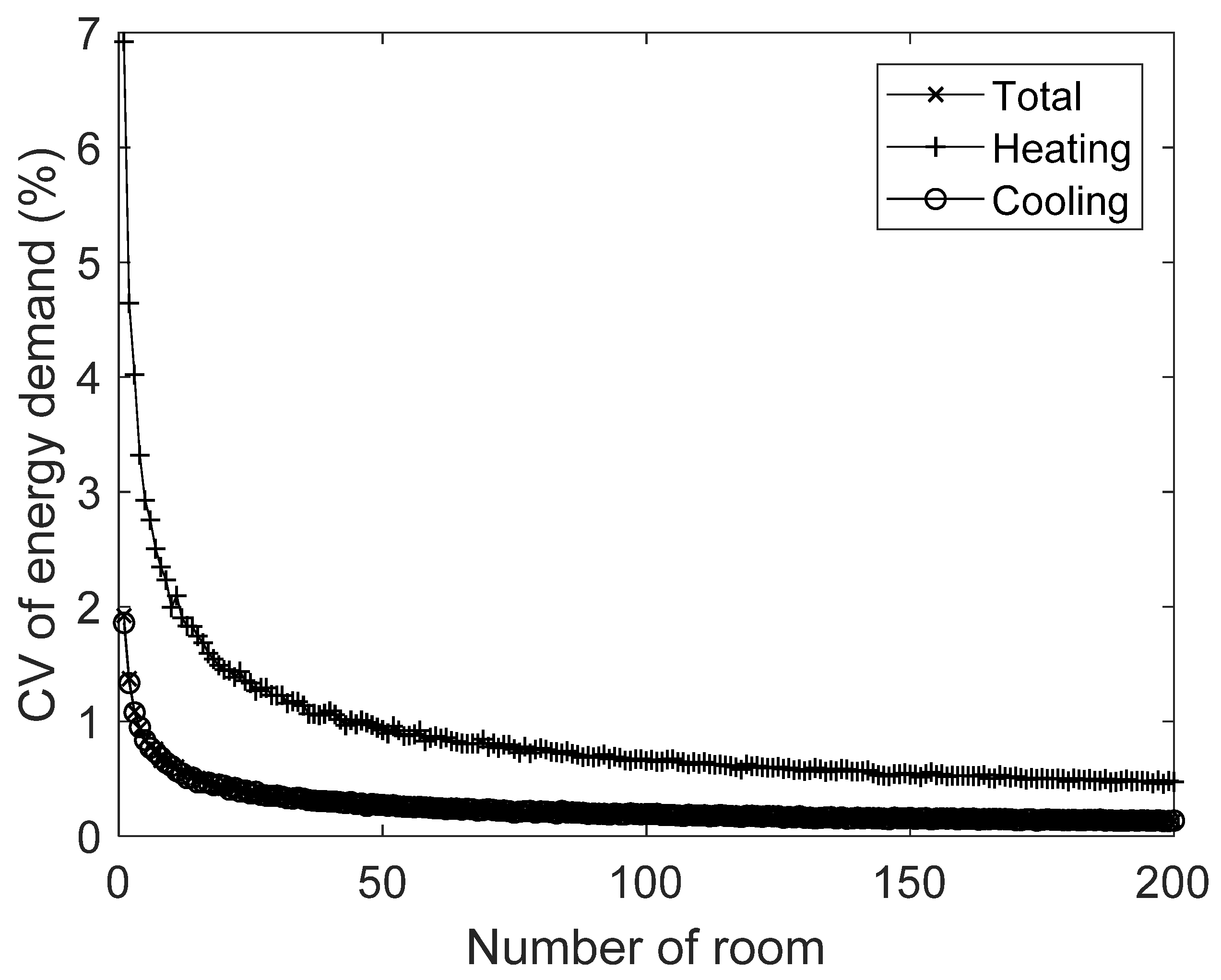


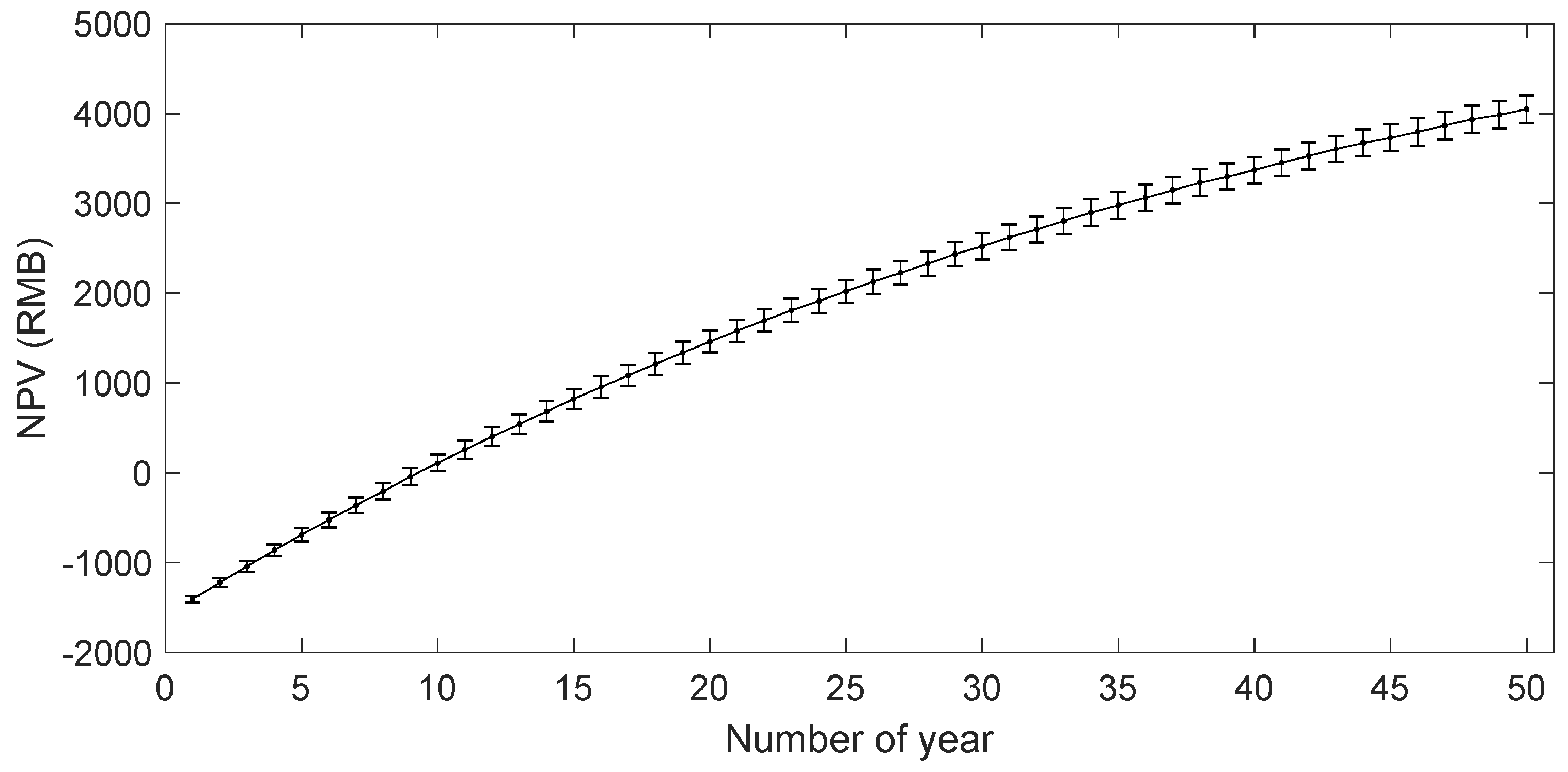
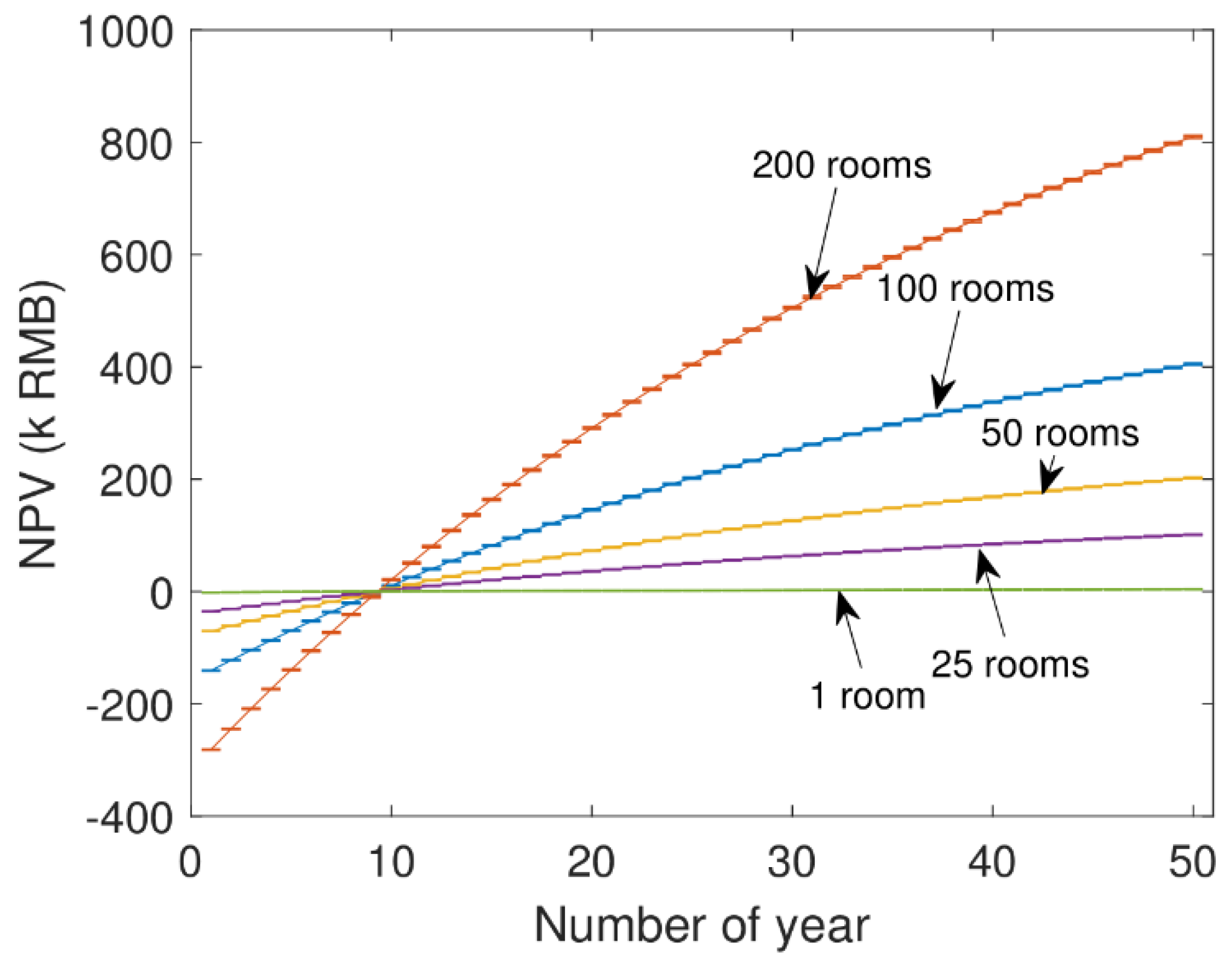
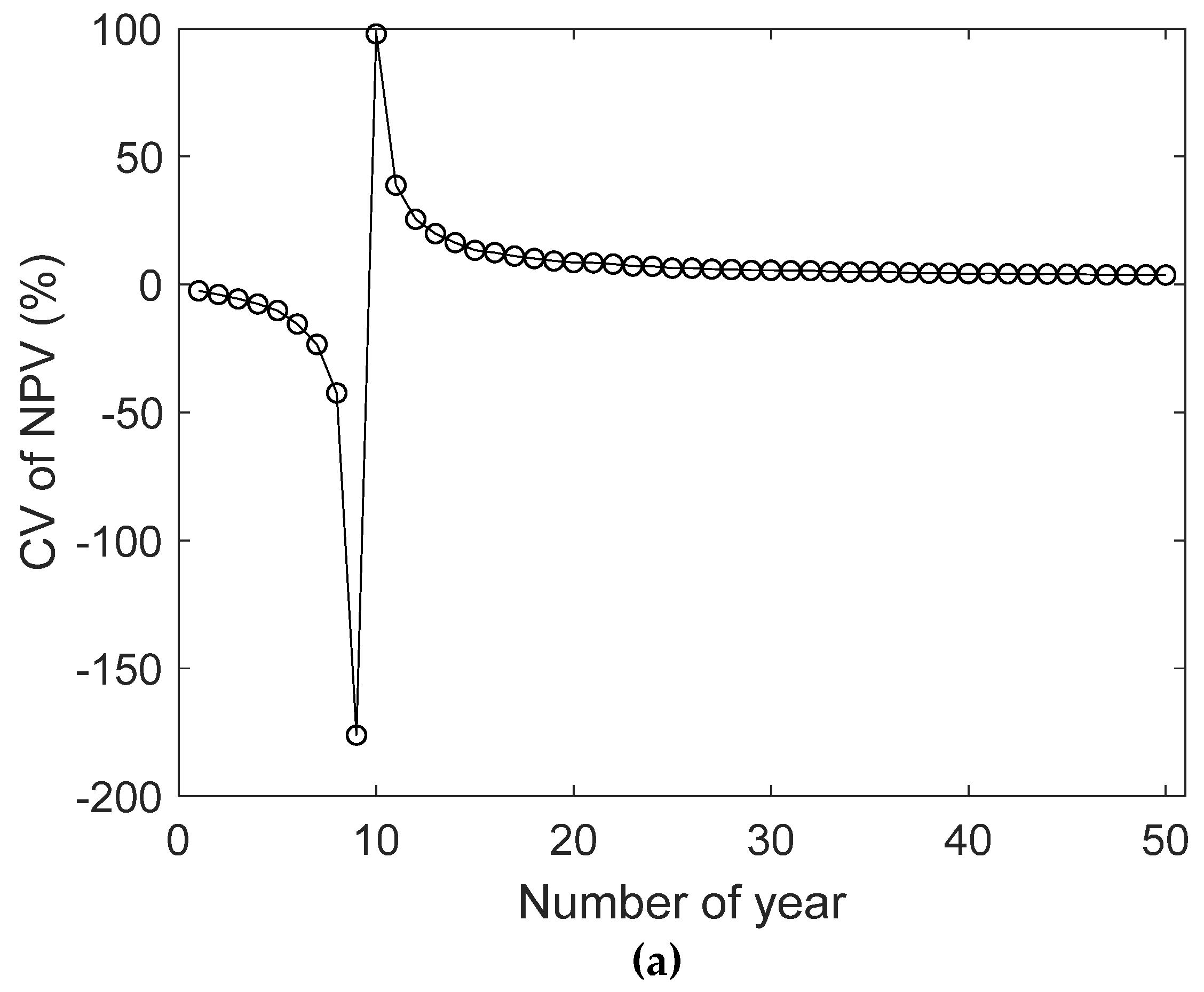
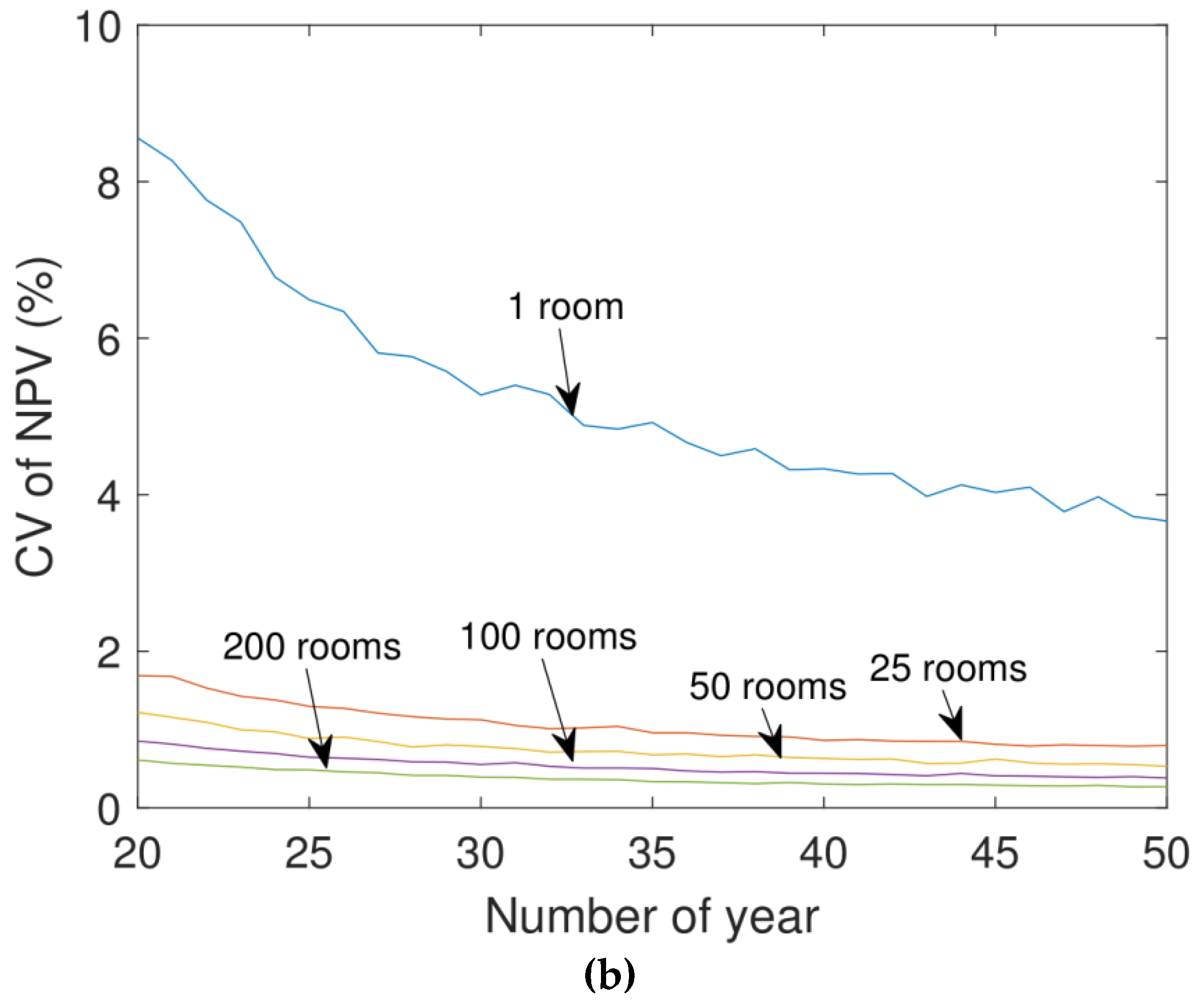

| Year | Literature | Short Description of Shade Model | Limitations |
|---|---|---|---|
| 1995 | [9] | Shades are triggered by daylight glare | It is a deterministic shade model |
| 2000 | [8] | Shades are triggered by workplane illuminance | It is a deterministic shade model |
| 2001 | [10] | Shades are triggered by solar radiation | It is a deterministic shade model |
| 2004 | [11] | Two types of shade models: dynamic (adjusted daily) and static (permanently lowered) | It is based on a rigid solar threshold (thus not stochastic) and only two shade positions are considered (fully opened or fully closed) |
| 2008 | [4] | A linear relationship was developed to describe the correlation between shade closing behavior and solar radiation | It is a deterministic shade model |
| 2010 | [9] | A logistic regression shade model that considers partial shading states | It is based on a rather unusual external blind configuration |
| Year | Literature | Type of Occupant Behavior | Type of Energy Uncertainty |
|---|---|---|---|
| 2006, 2012 | [3,16] | Different behavior patterns (e.g., high, medium, and low energy use) | Total |
| 2016 | [19] | AC usage | Cooling |
| 2017, 2018 | [17,18] | Light switch | Lighting |
| 2018 | [20] | Shade adjustment and light switch | Lighting |
| 2011, 2018 | [21,22] | Window opening, shade adjustment, light switch | Cooling and heating |
| Parameter | Value |
|---|---|
| Location | Hangzhou city in China, latitude: 30°, longitude: 120° |
| Orientation | south |
| Dimension | Room: 4 × 4 × 3 m, Window: 3.8 × 2.8 m |
| Window and shading device | Clear double-pane window +manually controlled external shading (Shade, the shade behavior model is described in Section 2.2), shade material: visual transmittance: 0.2. |
| Work time | 8:00–17:00 |
| HVAC | Temperature: 20–26 °C, run time: 8:00–17:00 |
| Interior heat generation | Light density: 11 W/m2; equipment: 20 W/m2 |
| Fresh air | and 40 m3/h.p |
| Probabilistic Model | Deterministic Models | ||
|---|---|---|---|
| Schedule-Based | Solar Radiation-Based | ||
| Total energy savings as compared with bare windows (%) | 9.50(±1.73) | 18.20 | −0.88 |
© 2019 by the authors. Licensee MDPI, Basel, Switzerland. This article is an open access article distributed under the terms and conditions of the Creative Commons Attribution (CC BY) license (http://creativecommons.org/licenses/by/4.0/).
Share and Cite
Yao, J.; Zheng, R. Uncertainty of Energy and Economic Performance of Manual Solar Shades in Hot Summer and Cold Winter Regions of China. Sustainability 2019, 11, 5711. https://doi.org/10.3390/su11205711
Yao J, Zheng R. Uncertainty of Energy and Economic Performance of Manual Solar Shades in Hot Summer and Cold Winter Regions of China. Sustainability. 2019; 11(20):5711. https://doi.org/10.3390/su11205711
Chicago/Turabian StyleYao, Jian, and Rongyue Zheng. 2019. "Uncertainty of Energy and Economic Performance of Manual Solar Shades in Hot Summer and Cold Winter Regions of China" Sustainability 11, no. 20: 5711. https://doi.org/10.3390/su11205711
APA StyleYao, J., & Zheng, R. (2019). Uncertainty of Energy and Economic Performance of Manual Solar Shades in Hot Summer and Cold Winter Regions of China. Sustainability, 11(20), 5711. https://doi.org/10.3390/su11205711






